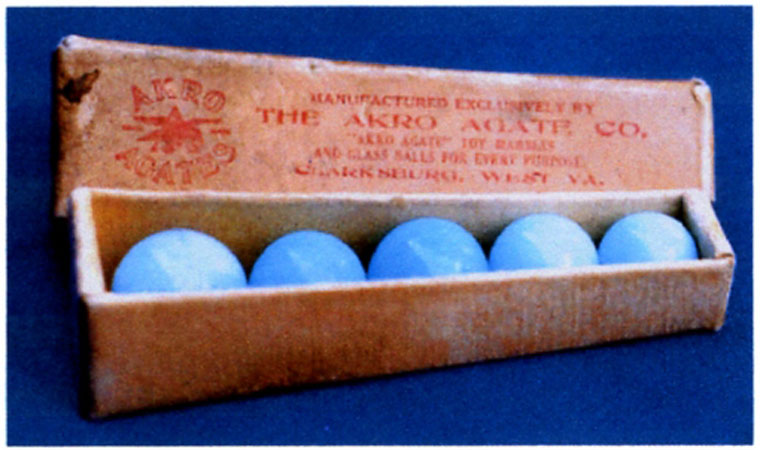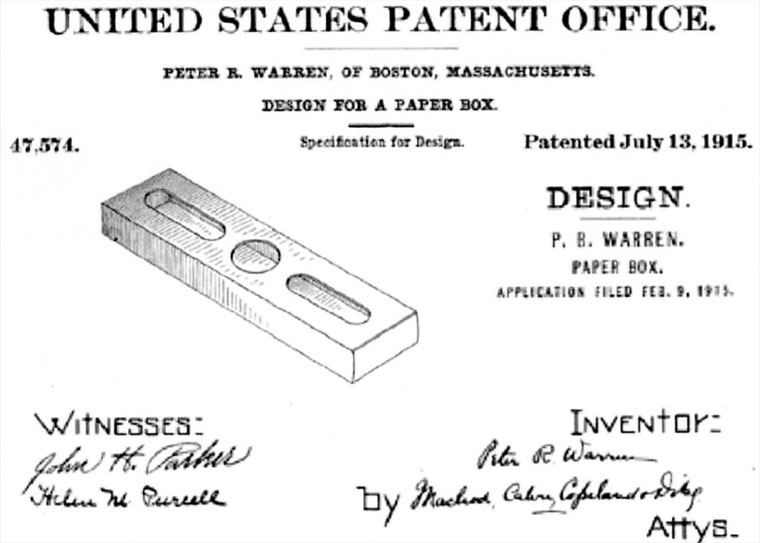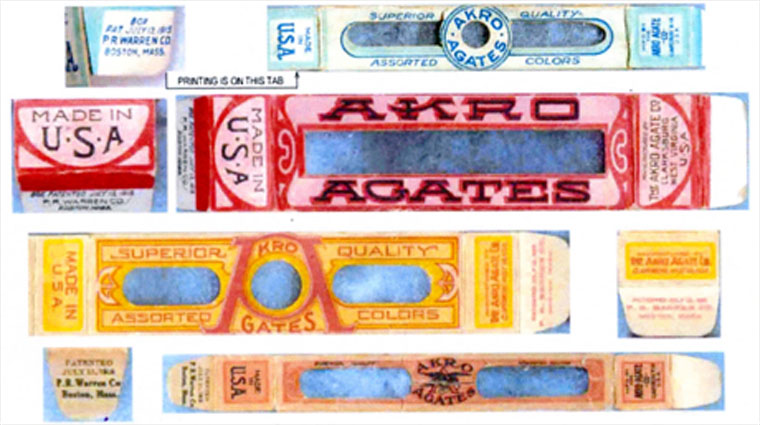

AKRO’S FIRST FOUR DISPLAY BOXES
By
George Sourlis
Akro Agate Company began in early 1911 in Akron, Ohio as a jobber of M.F.
Christensen & Son Company’s marbles.
They bought M.F.C.’s marbles, repackaged them under their own name, and
sold them. My current information
indicates that for their first 3 years they remained in Akron; they had no
manufacturing facilities there, but they had a packaging and sales area at 220
Main Street. This startup business
was forced to think small from the beginning.
They had no large world wide customer base like M.F.C.
Without a customer base and without past experience in selling marbles,
they had to focus on low-volume sales to build their business while maintaining
a low risk.
In 1914, when they decided to start a full-scale production facility in

PLATE 1 SMALL AKRO KEYSTONE BOX-ON PAGE
96 OF MARLBE MANIA
Mini-volume sales during their startup were encouraging enough for them
to approach the P.R. Warren Company of

PLATE 2 PAPER BOX PATENT BY PETTER R.
Akro immediately recognized these slotted boxes as an excellent way to
market mini-volumes of marbles. It
began testing the market with its first 4 small display boxes shown in Plate 3.
Notice that each box references the 1915 patent.

PLATE 3 AKRO’S FIRST 4 SMALL DISPLAY
BOXES
One pair of boxes holds a single row of 5 or 6 marbles; the other 2 are
twice as wide to hold about 10 marbles each.
The design of the opening is different in each box.
One double-width box has a rectangular slot.
One single-width box just has 2 slots.
The other 2 boxes, 1 single-width and 1 double-width, have a hole in the
center of the facing side. (I call
these center-hole sleeve boxes; see my article Vol. 7 of this newsletter).
Four different color combinations were used on these boxes.
Notice the innovative printing of the term “AKRO AGATES” in relationship
to the various openings. Finally,
common to all of the boxes is the company name, location, and logo.
(The logo on the light blue and white box is on its sides not shown in
Plate 3).
Today 19 different small Akro display boxes are known to exist.
The rectangular opening is found only in the box in Plate 3.
The 4 corners of the opening are weak points.
If the box is partly filled, marbles can just roll out through the
opening, which is too wide. This
box has an overall pink cast – a girl’s color – not one for boys, Fancy print
fonts were not used again.
The marketing advantages of these boxes are terrific.
The boxes themselves are colorfully decorated.
The openings allow the contents to be seen directly.
There’s no intervening cellophane with its glare and ability to
accumulate grime and dust. The
colors of the marbles add to the color of the box.
The marbles can be touched and turned to inspect the quality and pattern.
Tactile access directly to a quality product increases sales.
None of these boxes is numbered.
Numbering began in 1927.
I’d like to thank Hansel DeSousa for letting me use pictures of his boxes
in this article.